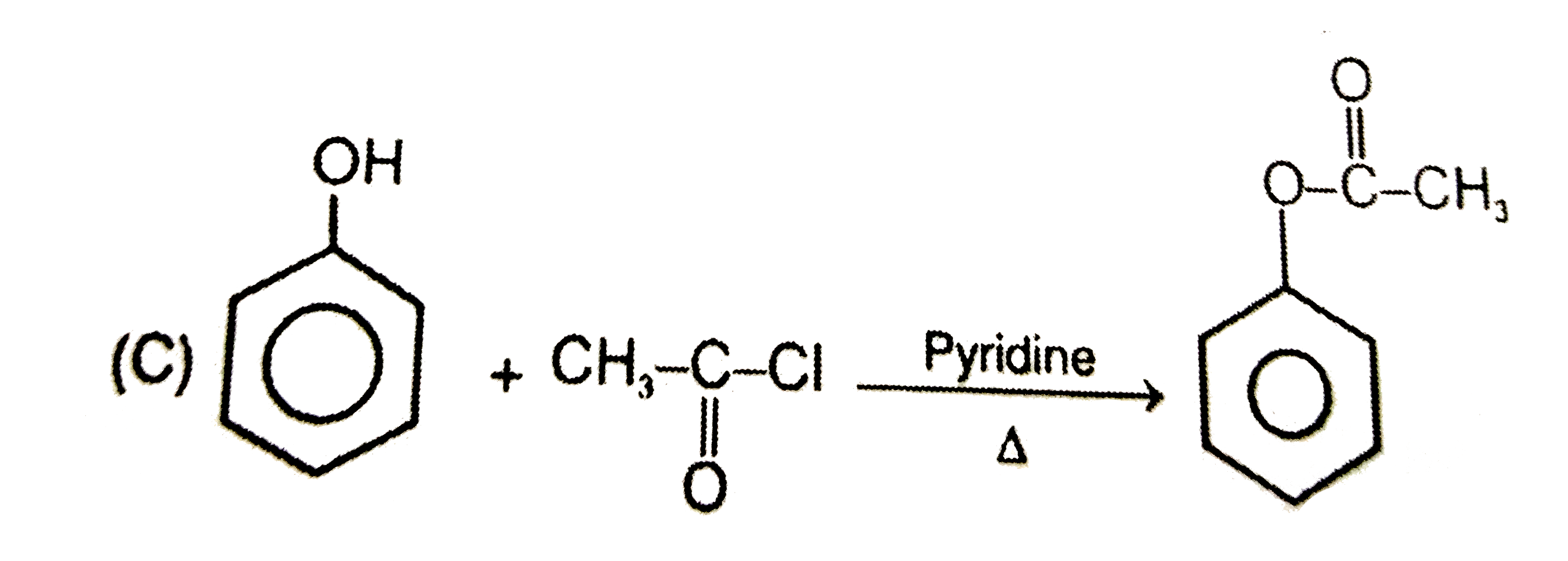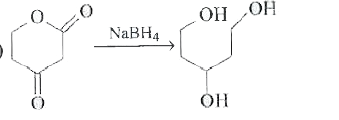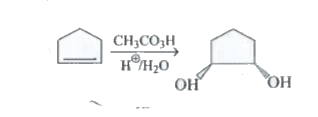Which of the following reaction is/are correct:




The correct Answer is:A, B, C, D
To determine which of the following reactions is/are correct, we will analyze each reaction step by step.
Step 1: Analyze the first reaction
The first reaction involves phenol reacting with carbon dioxide (CO2) in the presence of sodium hydroxide (NaOH) followed by acidification.
Reaction:
Phenol+CO2+NaOH→Salicylic Acid
This reaction is known as the Kolbe's reaction. It is a well-known reaction where phenol is converted into salicylic acid.
Conclusion: This reaction is correct.
Step 2: Analyze the second reaction
The second reaction involves phenol reacting with chloroform (CHCl3) in the presence of sodium hydroxide (NaOH).
Reaction:
Phenol+CHCl3+NaOH→Salicylaldehyde
This reaction is known as the Riemann-Tiemann reaction. It leads to the formation of salicylaldehyde, which can occur at the ortho and para positions.
Conclusion: This reaction is also correct.
Step 3: Analyze the third reaction
The third reaction involves the combination of hydrogen (H) and chlorine (Cl) in the presence of pyridine and heat.
Reaction:
H+ClPyridine, Heat−−−−−−−−→HCl
This reaction can be considered a general reaction where hydrogen and chlorine combine to form hydrochloric acid (HCl). The presence of pyridine and heat suggests a potential electrophilic substitution, which is indeed possible.
Conclusion: This reaction is correct.
Step 4: Analyze the fourth reaction
The fourth reaction suggests that HCl is reacting in the presence of NaOH, which implies a possible electrophilic aromatic substitution.
Reaction:
HCl+NaOH→(No significant product)
This reaction does not lead to any significant electrophilic aromatic substitution product. The expected outcome does not occur as it does not follow the mechanism of the Friedel-Crafts reaction or any other named reaction.
Conclusion: This reaction is incorrect.
Final Answer
Based on the analysis, the correct reactions are:
- A (Kolbe's reaction)
- B (Riemann-Tiemann reaction)
- C (Combination of H and Cl)
Thus, the answer is A, B, C.
---
The first reaction involves phenol reacting with carbon dioxide (CO2) in the presence of sodium hydroxide (NaOH) followed by acidification.
Phenol+CO2+NaOH→Salicylic Acid
The second reaction involves phenol reacting with chloroform (CHCl3) in the presence of sodium hydroxide (NaOH).
Phenol+CHCl3+NaOH→Salicylaldehyde
The third reaction involves the combination of hydrogen (H) and chlorine (Cl) in the presence of pyridine and heat.
H+ClPyridine, Heat−−−−−−−−→HCl
The fourth reaction suggests that HCl is reacting in the presence of NaOH, which implies a possible electrophilic aromatic substitution.
HCl+NaOH→(No significant product)
Based on the analysis, the correct reactions are:
- A (Kolbe's reaction)
- B (Riemann-Tiemann reaction)
- C (Combination of H and Cl)
Topper's Solved these Questions
- AROMATIC COMPOUNDSBOOK - RESONANCE ENGLISHCHAPTER - AROMATIC COMPOUNDSEXERCISE - Part - IV Comprehension
13 Videos
- AROMATIC COMPOUNDSBOOK - RESONANCE ENGLISHCHAPTER - AROMATIC COMPOUNDSEXERCISE - Exercise-3 (Part-I) JEE Advanced
34 Videos
- AROMATIC COMPOUNDSBOOK - RESONANCE ENGLISHCHAPTER - AROMATIC COMPOUNDSEXERCISE - Part - II Single or double integer type
7 Videos
- ALKYL HALIDE, ALCOHOL, PHENOL, ETHERBOOK - RESONANCE ENGLISHCHAPTER - ALKYL HALIDE, ALCOHOL, PHENOL, ETHEREXERCISE - ORGANIC CHEMISTRY(Alkyl Halide, Alcohol,Phenol,Ether)
56 Videos
- BASIC CONCEPTSBOOK - RESONANCE ENGLISHCHAPTER - BASIC CONCEPTSEXERCISE - ORGANIC CHEMISTRY(BASIC CONCEPTS)
27 Videos
Similar Questions
Knowledge Check
Which of the following reactions are correct ?
A B
B C
C DCH3−C≡NLiAlH4−−−→CH3CH2NH2
DCH3−C≡NLiAlH4−−−→CH3CH2NH2Which of the following reactions are correct?
A B
B C
C D
D
Which of the following reactions are correct?
A B
B CCH3−O∣∣C−ClPhMgBr−−−−−→H⊕/H2OCH3−O∣∣C−PhDPhMgBrCO2−−−−−→H⊕/H2OPh−O∣∣C−OH
CCH3−O∣∣C−ClPhMgBr−−−−−→H⊕/H2OCH3−O∣∣C−PhDPhMgBrCO2−−−−−→H⊕/H2OPh−O∣∣C−OH
Which of the following reaction is correct :
View SolutionWhich of the following reactions is correct.
View SolutionWhich of the following reactions is correct?
View SolutionIn following symbols are having usual meaning then which of the following reaction is correct ?
View SolutionWhich of the following reactions is not correct ?
View Solution
